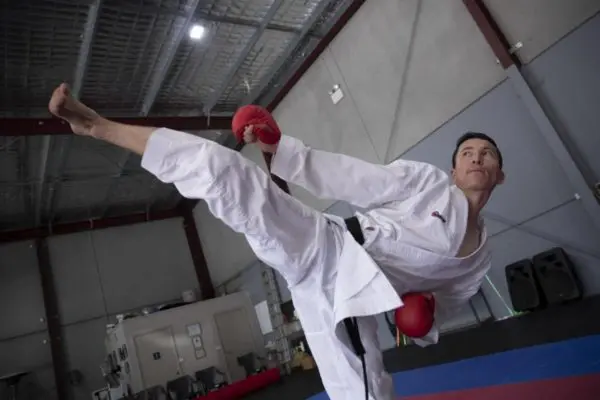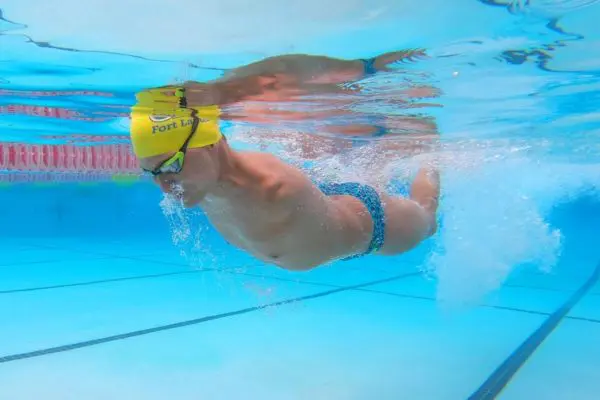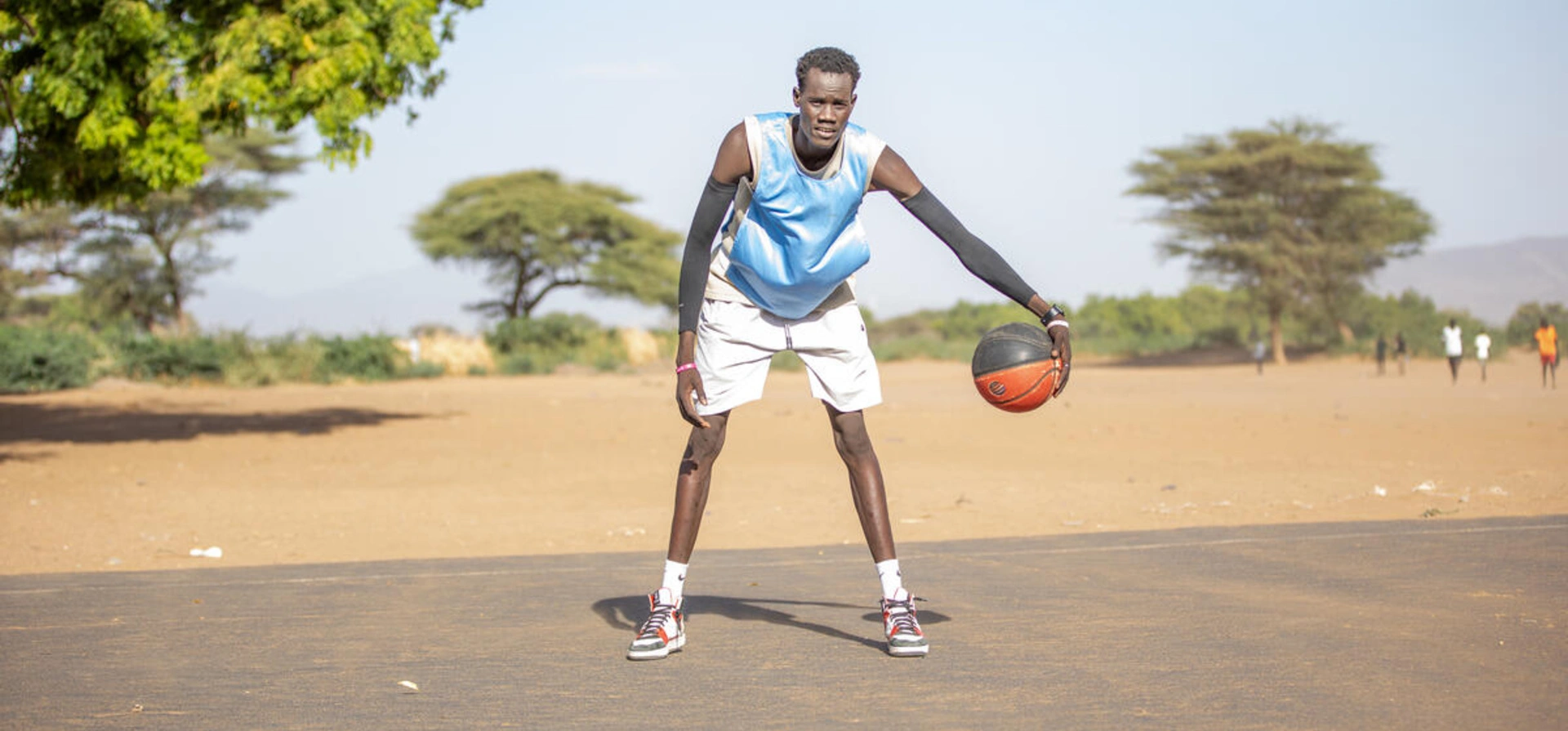
Lich Gatkoi dribbles the ball on a court in Kakuma Refugee Camp, Kenya. © UNHCR/Charity Nzomo
A new photo exhibition in Paris, on show throughout the Olympic and Paralympic Games, captures the power of sport for refugees and displaced people
When people are forced to flee violence, conflict or persecution, they face a period of exile and uncertainty that can last for years. As they seek to rebuild their lives, sport can be a source of hope and empowerment, and a path to physical and mental wellbeing.
Sport can help people to escape their everyday worries, restore a sense of fun and enjoyment, and provide some normality amid the disruption. But it is more than that – sport gives refugees the chance to heal, develop and grow, and contributes to new futures full of purpose, pride and achievement. And it can bring displaced people and their host communities closer together, breaking down barriers, sparking new friendships and facilitating integration and inclusion.
The new exhibition, organized by UNHCR, the UN Refugee Agency, the Olympic Refugee Foundation and City of Paris, demonstrates the power of sport to transform the lives of the forcibly displaced – whether as a vehicle for building lasting friendships, changing negative attitudes, and enhancing social cohesion, or taking the best and most talented all the way to the Olympic Games.
Here are some of the inspiring images from the exhibition.
Abbas Karimi, Paralympian swimmer
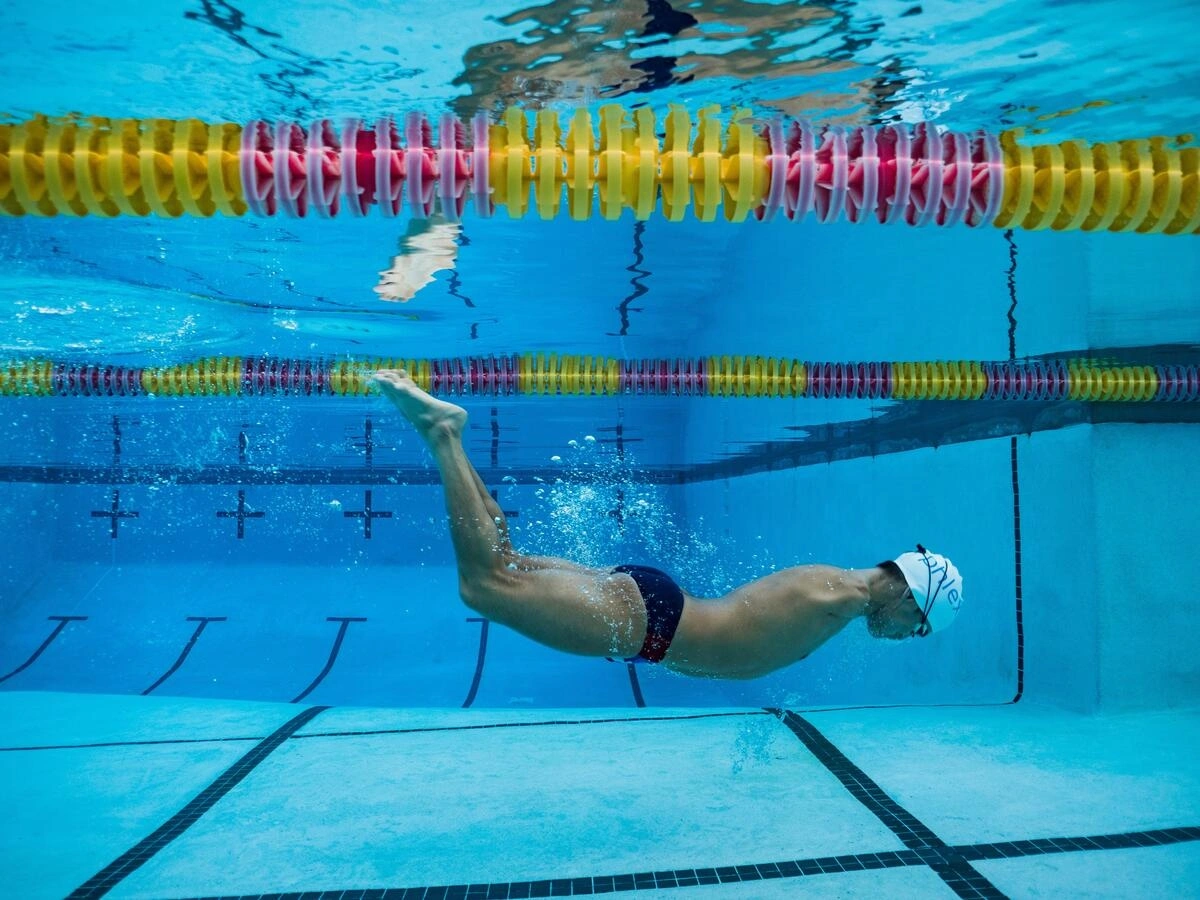
Abbas Karimis trains in Florida, USA. © Courtesy of Ryan Rosenbaum
Abbas was born without arms. After becoming a national Para swimming champion in Afghanistan, he was forced to flee due to persecution. He took refuge in Türkiye before being resettled in the United States, where he won a place in the Tokyo 2020 Refugee Paralympic Team. He now competes for the US team.
Parfait Hakiziman, Paralympian taekwondoin
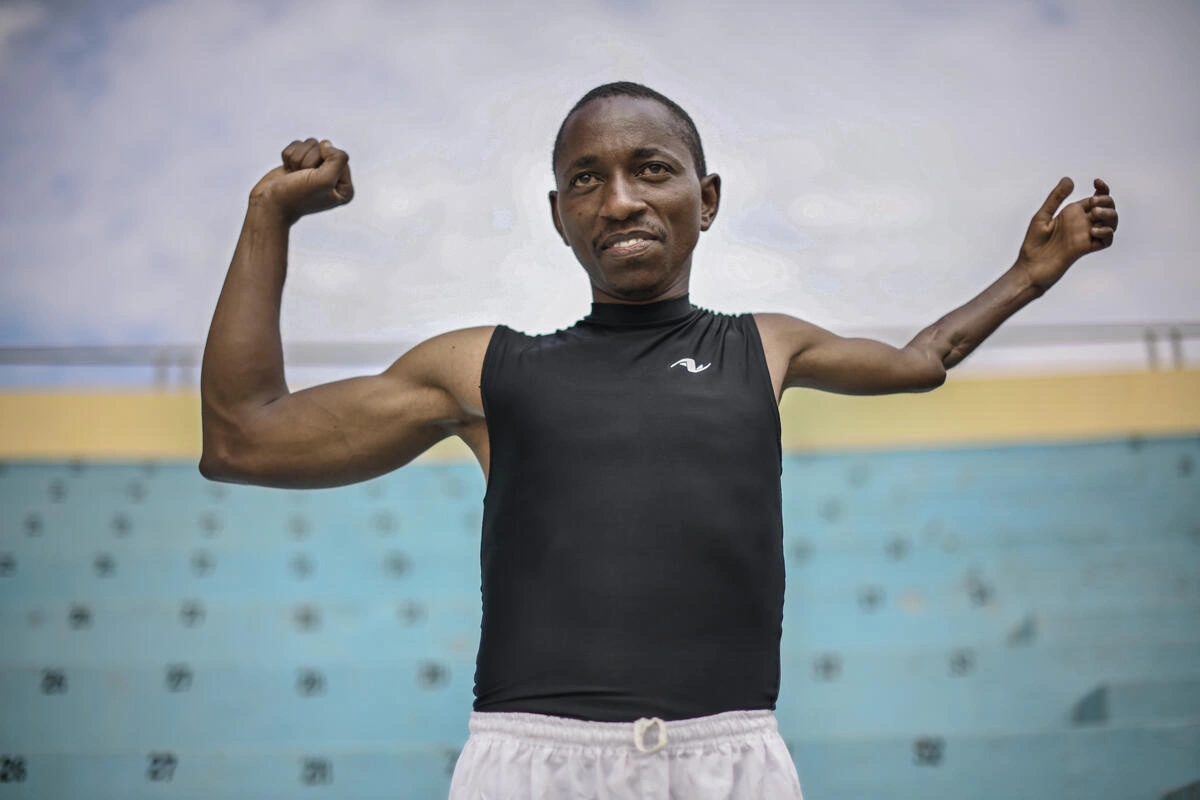
Parfait Hakiziman exercises in the Mahama Refugee Camp, Rwanda. © UNHCR/Anthony Karumba
When he was a child, Parfait was severely wounded in a violent attack on his town that left his mother dead and his left arm permanently disabled. Afterwards, Parfait found safety in Rwanda, where he teaches taekwondo to refugee children. He won a place on the Tokyo 2020 Refugee Paralympic Team.
Afghan women’s football team

Players from the Afghan women’s football team at a training session in Melbourne, Australia. © UNHCR/Heidi Wentworth-Ping
Several members of Afghanistan’s national women’s football team were forced to flee their home country because of threats. The Australian government granted emergency visas to them and their family members in 2021 and now the young women compete in the Victorian State League.
Lich Gatkoi, refugee basketball player

Lich Gatkoi dribbles the ball on a court in Kakuma Refugee Camp, Kenya. © UNHCR/Charity Nzomo
When he was 15, Lich Gatkoi escaped South Sudan for the safety of Kakuma Refugee Camp in Kenya. There he started a basketball team that brings young people together through sport and has led to some winning scholarships to attend high school.
Terrains d’Avenir sports programme

Young asylum-seekers and refugees in the Île-de-France region play rugby. © Terrains d’Avenir/Amandine Lauriol
Terrains d’Avenir contributes to the social inclusion of displaced young people in their new communities in Île-de-France, a region incorporating Paris. Supported by the Olympic Refuge Foundation, the French Ministry of Sports and the City of Paris, it offers a range of sporting events for displaced young people and their host communities including rugby, football, taekwondo, volleyball and basketball.
Fernanda Godoy Escalante, boxer

Fernanda Godoy Escalante, 13, trains at a boxing gym in Tegucigalpa. © UNHCR/Santiago Escobar-Jaramillo
The daily violence of criminal groups in Honduras means Fernanda might have to flee her home at any moment, but despite these challenges she became a national boxing champion. Her determination is testament to what forcibly displaced people can achieve when given the opportunity.
Wessam Salama, Olympian boxer

Wessam Salama wraps his hands before a boxing session. © UNHCR/Gordon Welters
Wessam, his wife and two children found safety in Germany after being forced to flee Syria during the civil war. Having already represented his country at boxing at the London Olympics in 2012, Wessam went on to box for the Refugee Olympic Team in 2020.
Popole Misenga, Olympian judoka
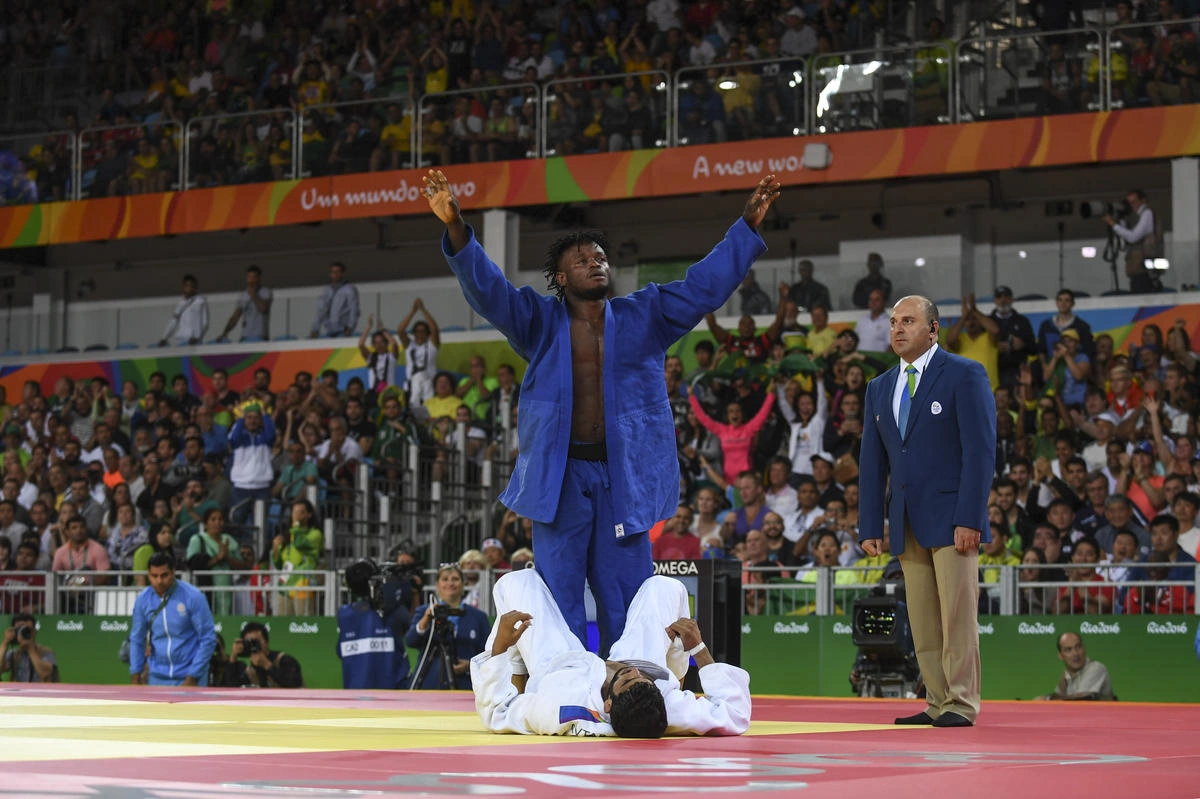
Popole Misenga celebrates his winning bout at the Rio 2016 Olympics. © UNHCR/Benjamin Loyseau
Popole’s dream of judo started young when he was living in an orphanage for displaced children in Kinshasa, Democratic Republic of the Congo. He later was granted asylum in Brazil and in 2016, as a member of the inaugural Refugee Olympic Team, became the first refugee in history to win a match at the Olympic Games.
Krisildo Guce, refugee dancer
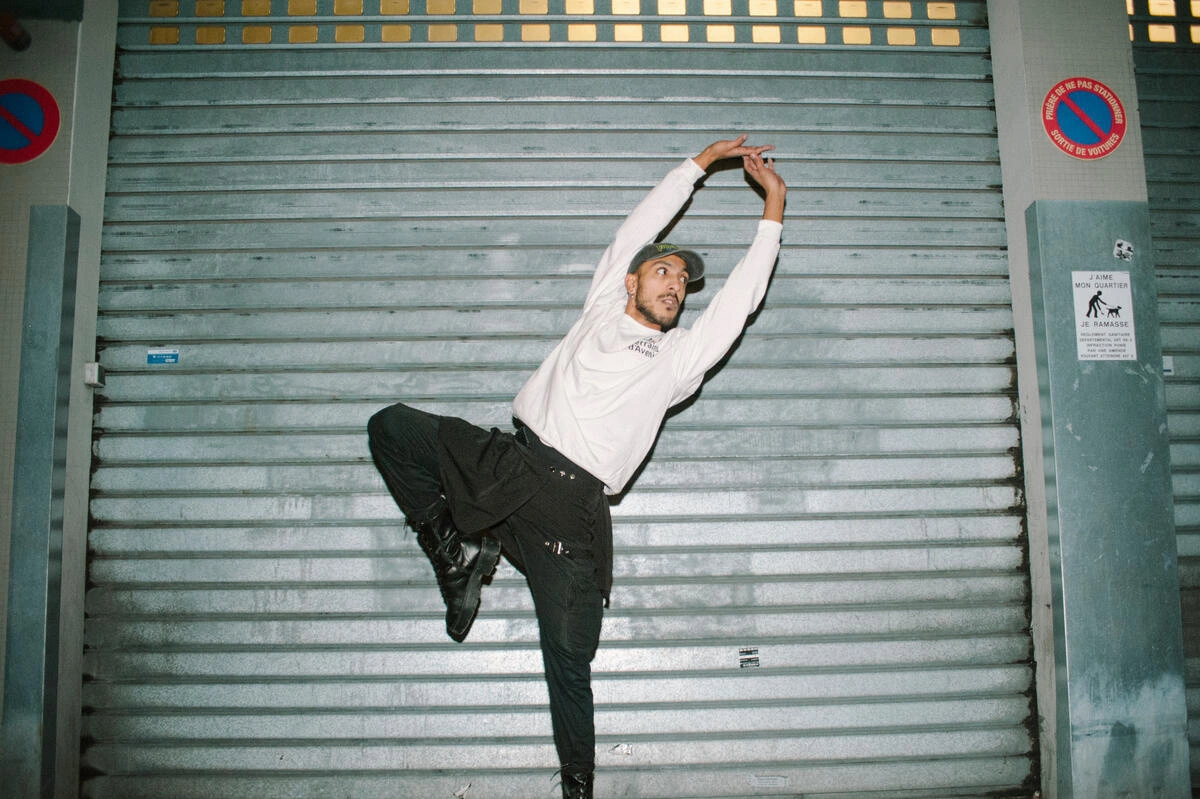
Krisildo Guce practises his dance moves in Paris. © Terrains d’Avenir/Agence Protein
At a young age, choreographer and dancer Krisildo discovered traditional dance in his home country of Albania. Since becoming a refugee in France he has focused on modern dance, which he now teaches in Paris through Kabubu, an organization that is part of the Terrains d’Avenir sports programme, bringing together displaced young people and their host communities.
Judo for Peace

A young judoka demonstrates her strength in South Africa. © UNHCR/Emmanuel Croset
Part of the annual international 16 Days of Activism Against Gender-Based Violence campaign, Judo for Peace showcases martial arts skills in South Africa. The event promotes dialogue and understanding between local children, refugees, asylum-seekers and their hosts.
Eldric Sella Rodriguez, Olympian boxer
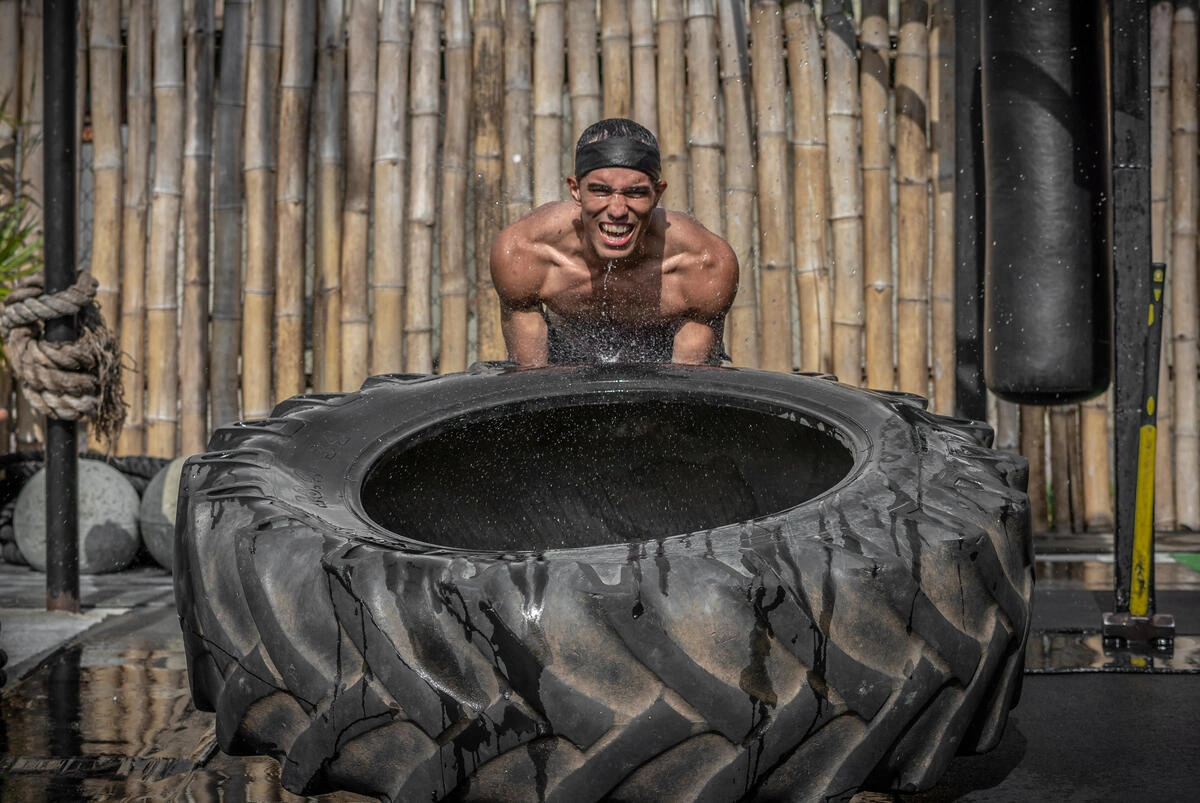
Eldric Sella Rodriguez lifts a truck tyre in Trinidad and Tobago. © UNHCR/Jeff Mayers
Originally from Venezuela, Eldric was already a successful boxer when he fled violence and instability at home and found safety in Trinidad and Tobago. He participated in the Tokyo Olympics as part of the Refugee Olympic Team and continues to fight to win new medals and raise awareness of the plight of the millions of others who, like him, have had to flee Venezuela in search of safety and a better life.
Dancing to heal trauma
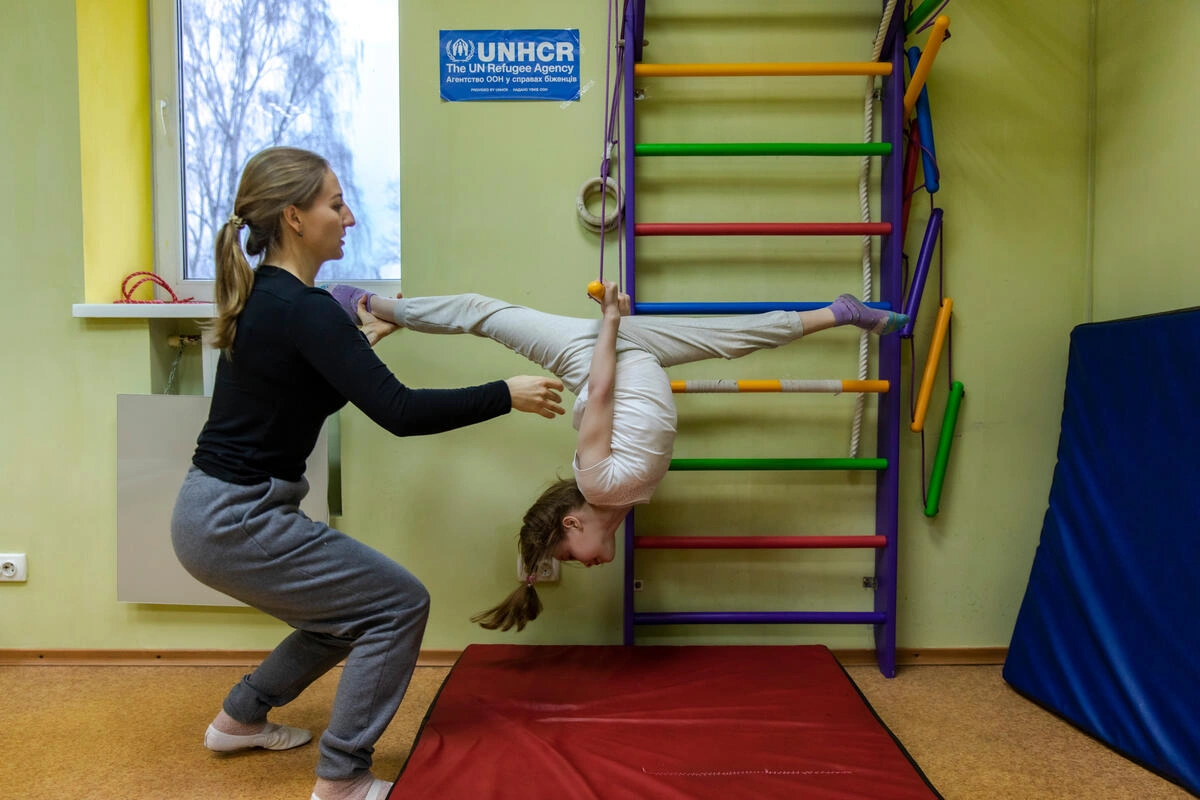
Displaced children in Ukraine learn to dance. © UNHCR/Andrew McConnell
Dance is one of many activities provided to displaced children for free at a daycare centre in Ukraine. Traumatized by the experience of war, dance helps the children to heal and regain their confidence.
Check out the exhibition
© UNHCR
The exhibition, featuring 22 photographs of inspiring refugee athletes, will be displayed on the walls of the Caserne Napoleon (Napoleon Barracks) in central Paris until 30 August.
Originally published by UNHCR on 12 July 2024.




